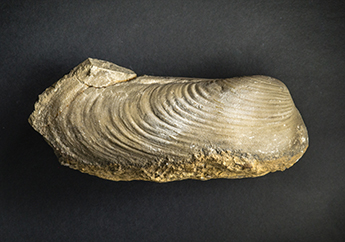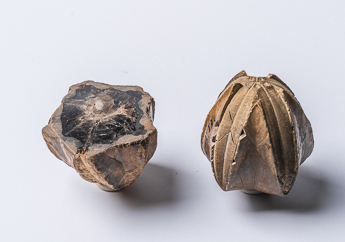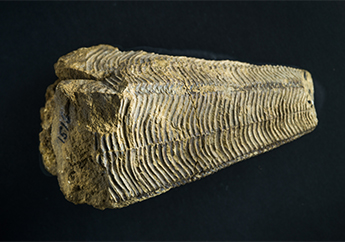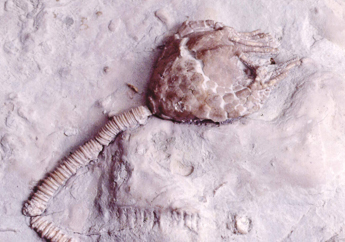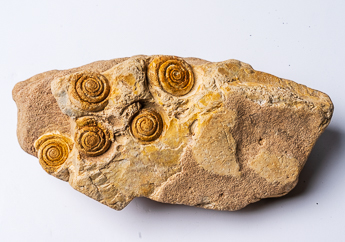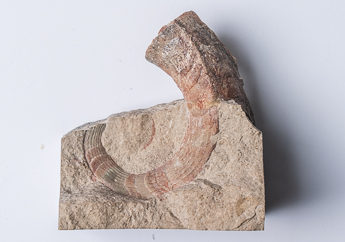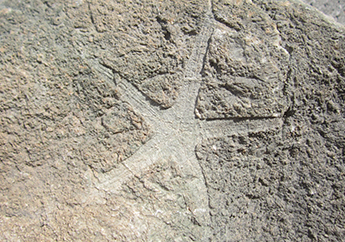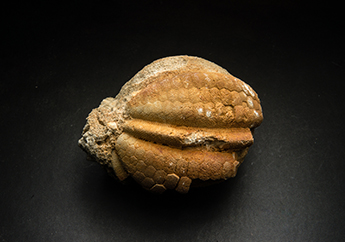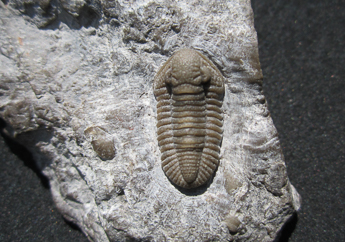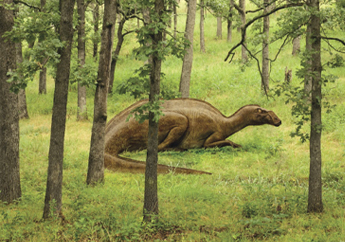The word “fossil,” comes from the Latin word “fossilis,” which means “dug up.” Fossils often are found in limestone and they represent a variety of extinct marine invertebrate animal life forms, including brachiopods, bryozoans, clams, corals, crinoids, nautiloids and snails. See below for some of the most common fossils found in Missouri.
Countless fossils are embedded in the marble in the walls and floors, the rotunda, the treads of the stairways and on the exterior of our state Capitol in Jefferson City. They can be viewed on an easy walking tour.
Conulariid Jellyfish
Conulariid jellyfish are primitive, tentacled, free-swimming invertebrate animals
State Dinosaur
Hypsibema missouriensis bones found in Missouri reside in the Smithsonian Institution

